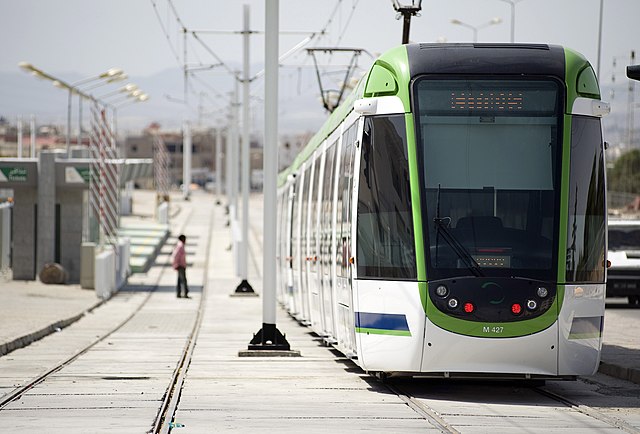Transportation in Los Angeles
Los Angeles has a complex multimodal transportation infrastructure, which serves as a regional, national and international hub for passenger and freight traffic. The system includes the United States' largest port complex; an extensive freight and passenger rail infrastructure, including light rail lines and rapid transit lines; numerous airports and bus lines; vehicle for hire companies; and an extensive freeway and road system. People in Los Angeles rely on cars as the dominant mode of transportation, but since 1990 the Los Angeles County Metropolitan Transportation Authority has built over one hundred miles (160 km) of light and heavy rail serving more and more parts of Los Angeles and the greater area of Los Angeles County; Los Angeles was the last major city in the United States to get a permanent rail system installed.
Los Angeles Union Station, hub for L.A. Metro trains and buses and Metrolink and Amtrak trains, and the Hollywood Freeway, one of Los Angeles' major thoroughfares
Los Angeles International Airport (LAX), the fourth busiest airport in the world
A view of the Vincent Thomas Bridge reaching Terminal Island
Rush hour on the Harbor Freeway in downtown Los Angeles
Light rail transit (LRT) is a form of passenger urban rail transit characterized by a combination of tram and rapid transit features. While its rolling stock is similar to that of a traditional tram, it operates at a higher capacity and speed and often on an exclusive right-of-way. In many cities, light rail transit systems more closely resemble, and are therefore indistinguishable from, traditional underground or at-grade subways and heavy-rail metros.
Los Angeles' expansion of mass transit has been driven in large part by light rail.
Utah Transit Authority's TRAX has 50 stations on three lines.
The CTrain is a light rail system operated by Calgary Transit.
The light rail in Tunis, Tunisia, was the first light rail system in Africa.








